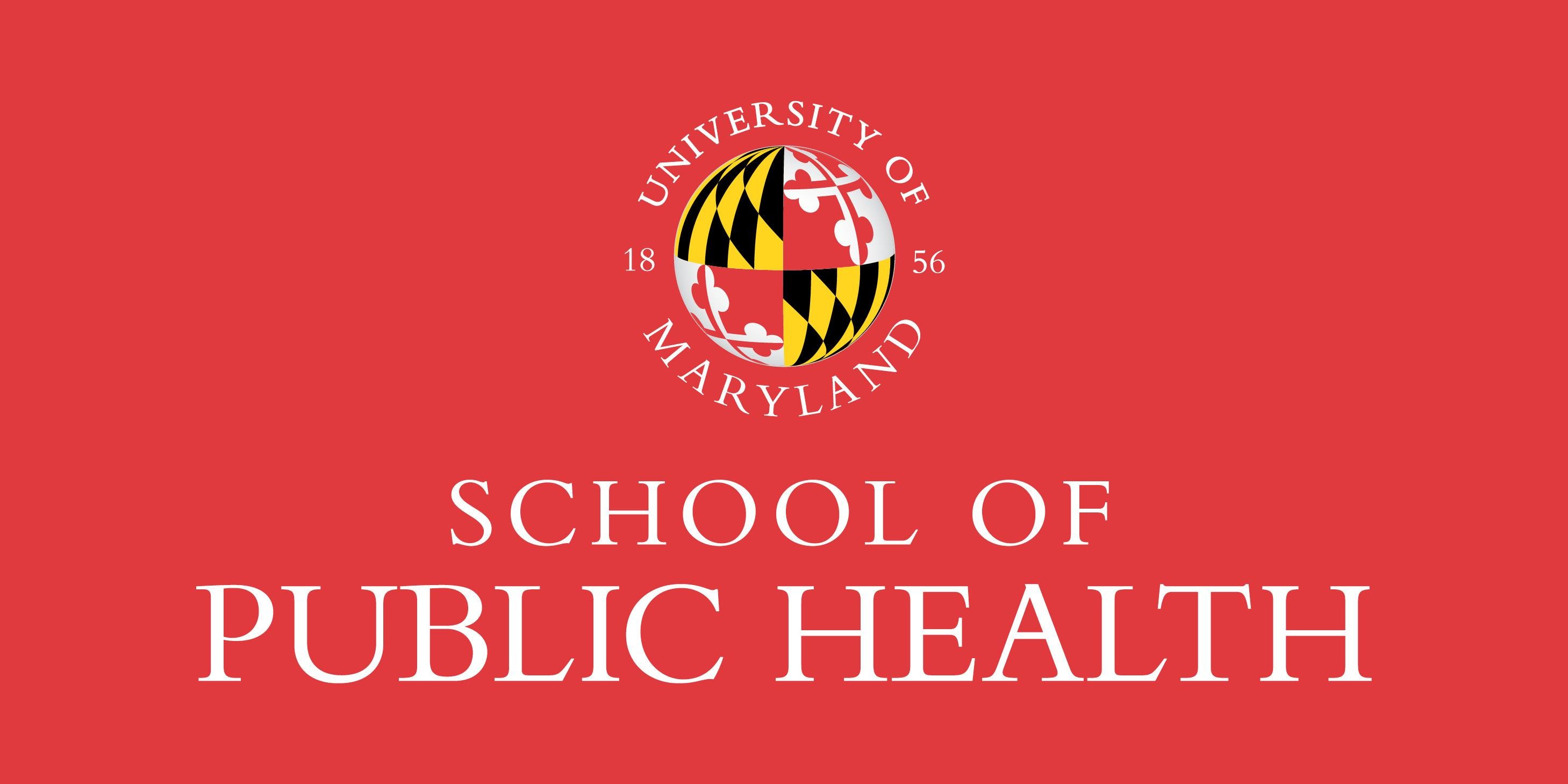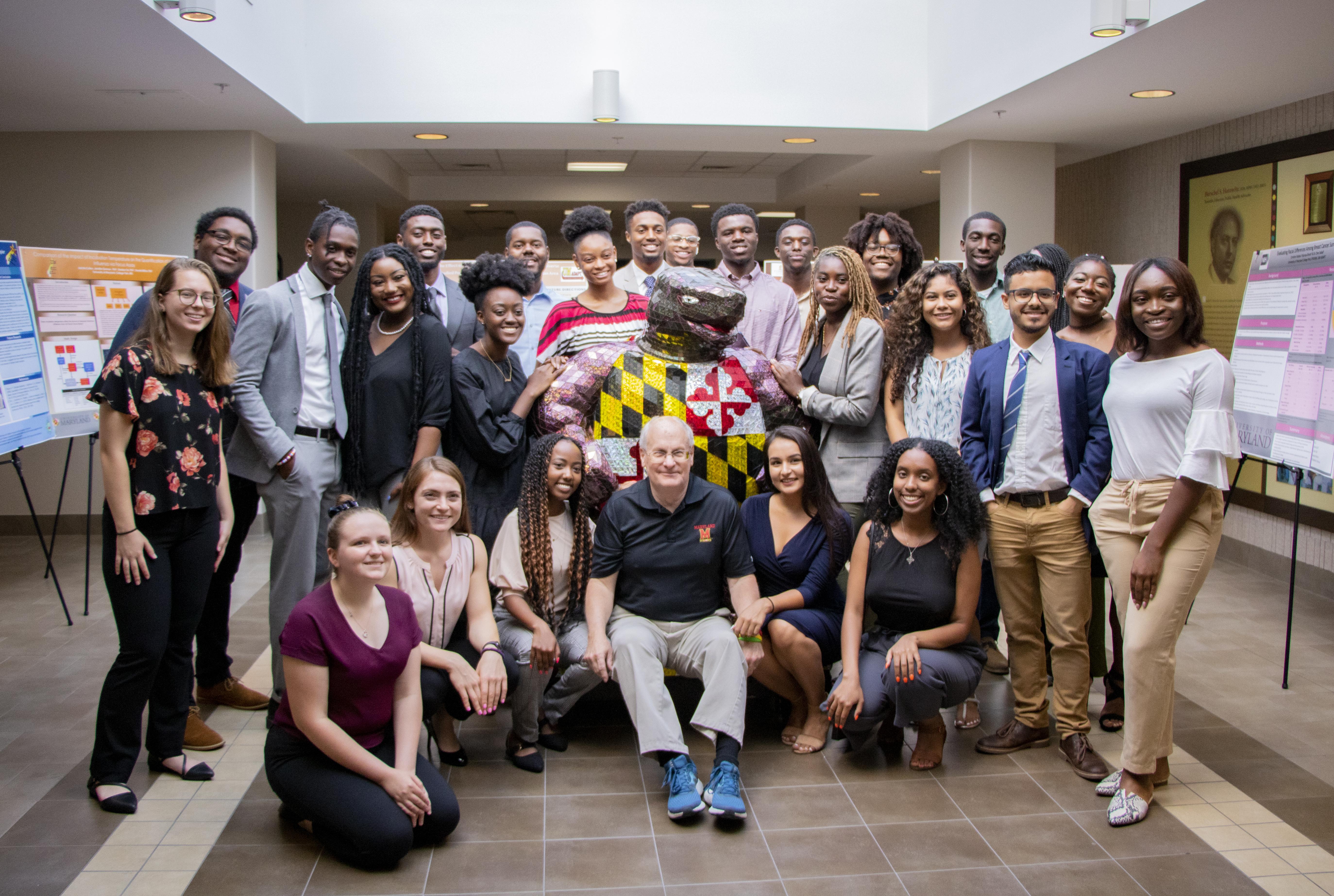

A Puerto Rican student shaken by the sudden collapse of local health care. A Mexican-American immigrant driven towards advocacy after watching her father face racism. A Belizean former high school athlete seeking better treatments for sports injuries in his home country.
They’re among 25 participants—selected from a pool of more than 1,000 applicants—spending the summer at the University of Maryland School of Public Health through two programs funded by the National Institutes of Health giving minority students and those from disadvantaged backgrounds opportunities to do research in a safe space to learn and grow.
The ADAPT (Aging Diversity and Professional Development) program for Terp undergraduates and STAR (Summer Training and Research) for undergraduates across the county, train and mentor them over two consecutive 10-week summer sessions. They also remove financial barriers to attending by covering travel expenses, most meals and on-campus housing and providing a stipend. The STAR program has been funded since 2011 by a grant from the NIH-National Heart, Lung, and Blood Institute (NHLBI) and the ADAPT program launched in 2014 with a grant from the NIH-National Institute on Aging.
Students, recruited through the Big Ten Academic Alliance, are paired with a faculty research mentor, attend weekly lunches with guest speakers and learn how to understand, critique and present research articles.
First-year students receive research ethics training, while second-year students receive help with their curriculum vitae, GRE preparation, graduate school applications and even mock graduate school interviews.
“They can rise up by standing on the shoulders of others who went before them,” said kinesiology Professor James Hagberg, who has led the training programs since 2011 and mentored hundreds of students. “Connecting them with people and showing them what’s out there is a really important thing.”

The programs also include visits to federal agencies and labs as well as places like the National Zoo, White House and the Chesapeake Bay Foundation. They finish the program with a group dinner at Hagberg’s house.
“We want to show them that we can be doing good science, but we can have fun with that too,” he said.
Meet five members of this year’s cohorts.
Afnan Gimie
Afnan Gimie’s Eritrean-American parents have high hopes for their daughter. “They’ve drilled in medical school since day one,” she said. But when she transferred to Maryland at the start of her junior year, Gimie ’19 felt like everyone was one step ahead on that path.
Two summers later, Gimie credits the ADAPT program with helping her fall in love with the challenges and triumphs of research. When she returned to her public health science classes after her first summer in the program, Gimie felt prepared to succeed. “I had that safe space where I could prepare myself,” she said.
As part of the program, Gimie conducted research with mentor Donald Milton’s C.A.T.C.H. (Characterizing And Tracking College Health) the Virus Study, then interned at the U.S. Department of Agriculture during her senior year. She’s been told that her experience with the ADAPT program gave her an advantage over other applicants.
She’ll finish her prerequisites for medical school through Maryland’s Science in the Evening program and plans on taking a gap year before applying to medical schools.
Diego de la Cruz Caro
Hurricane Maria’s destruction left people like Diego de la Cruz Caro and his family in the dark.
There was no electricity, no running water and no medical care for months. “The reality of how quickly it can all come tumbling down really hit me,” said de la Cruz Caro.
Seeing this suffering inspired de la Cruz Caro to pursue a career in public health so that he could help rebuild the health care infrastructure of his community.
As an incoming junior at the University of Puerto Rico in Aguadilla, de la Cruz Caro was already familiar with scientific concepts, but working with mentor Sarah Kuzmiak-Glancy in the STAR program has been his first real taste of lab work.
He credits it with giving him the confidence to learn new things and take on new challenges—a confidence that was only shaken by the events of September 2017.
To pay it forward, de la Cruz Caro hopes to translate his newfound confidence into resilience for his community by pursuing a career in medicine or pharmacy.
Earon Grinage
Back home in Belize, Earon Grinage saw sports injuries take his friends out of commission. When he came to the U.S. at 16 and played basketball for his high school team, he noticed that American student-athletes recovered from those same injuries much faster.
Grinage knew that the difference in health care quality is a big factor in this disparity when he started his independent research as a student at Illinois State University.
The STAR program allowed Grinage, a molecular and cellular biology major, to link his scientific interests to his love for sports. His research with mentor Bradley Hatfield’s Human Performance Biopsychology lab at UMD focuses on the connection between our brains and our movements, which has applications not just for athletes but for our everyday movements.
Now he dreams of becoming a team orthopedic doctor for the NBA or MLB. Grinage also hopes to return to Belize as a doctor to elevate and advocate for his community. “I’m trying to see further than myself,” he said. “I’m trying to help my community and my people.”
Melissa Nava
When Melissa Nava was a child accompanying her father to his medical appointments, she noticed that doctors and nurses treated him rudely due to his race and difficulty speaking English.
“I’d speak up, and all of a sudden it was a different experience,” she said.
For a long time, Nava believed that being a doctor was the only way she could give back and make her Mexican-American parents proud, but her experience working in mentor Cheryl Knott’s Community Health Awareness, Messages & Prevention (CHAMP) lab helped her realize that she could help empower communities in many different ways.
One way is by helping DePaul University students like herself find feedback, support and resources. She will start this fall by establishing a chapter of SPILL (Supporting Peers In Laidback Listening), an anonymous, confidential, peer-to-peer support system. Nava hopes SPILL will give other minority students the sense of community that the STAR program has given her.
Now a senior, Nava plans on returning to the STAR program next summer and solidifying her post-graduate plans. Ultimately, she wants to give marginalized people—like those at the U.S.-Mexico border or those suffering from mental health issues in closed-off communities—a voice.
“To come here and see other people of color who are amazing and so successful in their programs is beautiful,” she said. “It motivates me to keep going.”
Jariatu Jambai
Jariatu Jambai ’19 calls her first summer in the ADAPT program life-changing.
“I never thought that I could do the things that I’ve done,” she said. “I never thought that I could do research.”
But Jambai did more than just research; she found her voice working with Cheryl Knott’s CHAMP lab and later, Jennifer Robert’s Purple Line Light Rail Impact on Neighborhood, Health and Transit (PLIGHT) study.
The openness of her mentors at Maryland helped Jambai feel comfortable speaking up when she had questions. She especially appreciated the guest speakers who spoke openly on their life experiences.
“They helped us to see that honestly, no one has a set path,” she said. “That it’s ok not to know.”
For the future, Jambai hopes to be able to change people’s lives by helping them see and reach their potential.
And in just a couple of weeks, she will do just that by working with students in a holistic academic enrichment program through AmeriCorps in Illinois.
“I want to take a chance on someone,” she said. “Because someone took a chance on me.”
Related Links: